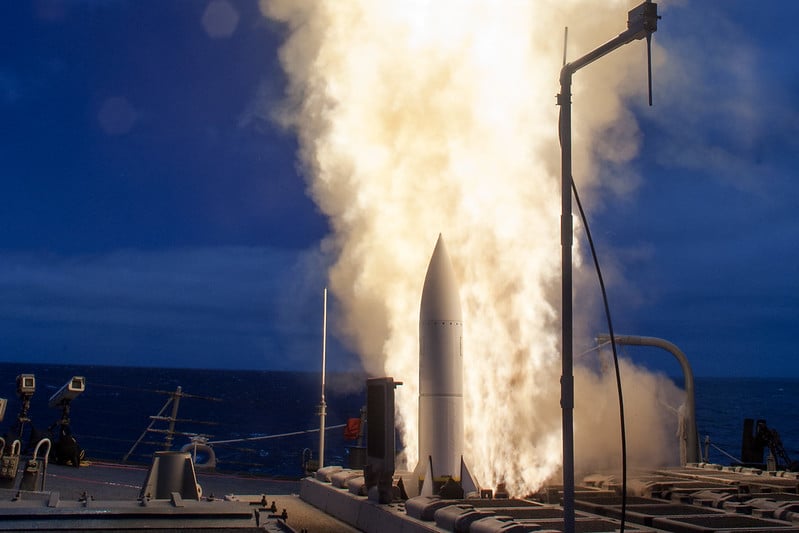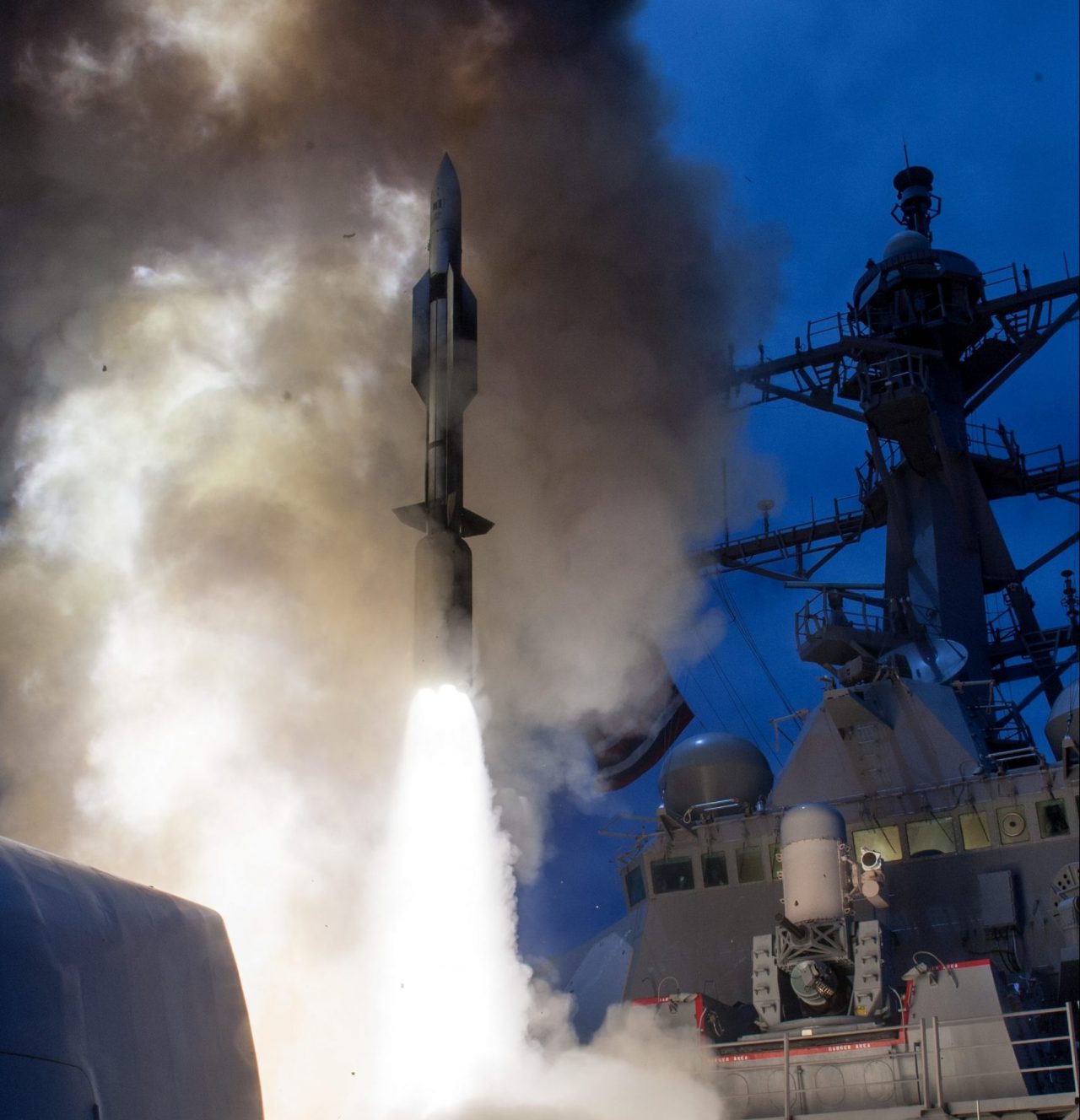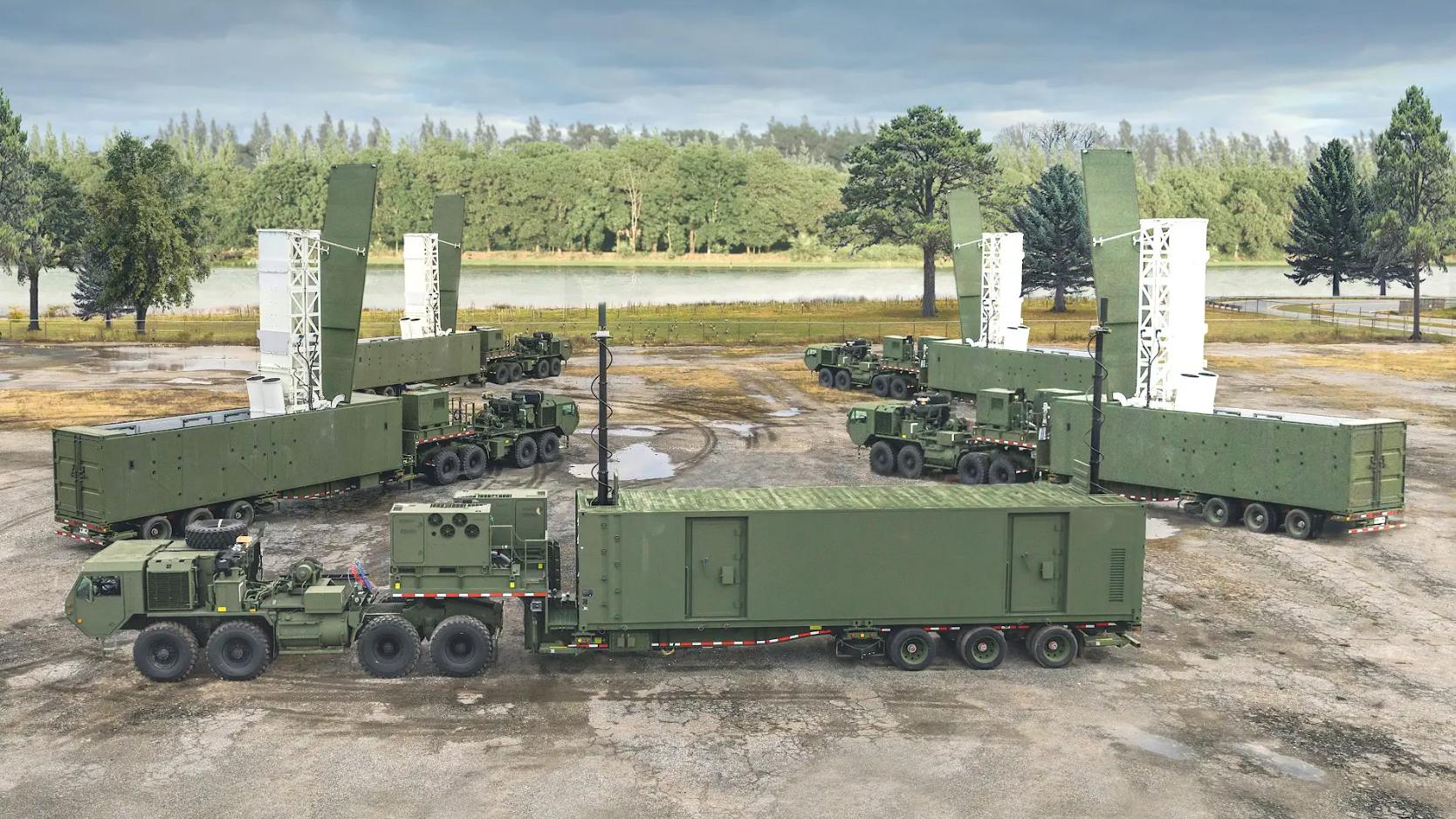“Greatest Arms Race In The Region” Prompts Australia To Invest $4.7B On Missiles, Missiles & More Missiles!

Australia has committed to spending $4.7 billion (AUS $7B) on a stockpile of advanced long-range missiles from the United States to bolster its defense capabilities amid what is described as “the greatest arms race in the region since World War II.”
Defence Industry Minister Patrick Conroy announced the deal during his visit to Washington, D.C., and the U.S. Congress has already approved it.
The acquisition includes hundreds of SM-2 IIIC and SM-6 long-range weapons for the Navy that can be launched from both land and sea. Defence Minister Richard Marles hailed these US-made weapons as “the most advanced air and missile defense weapons in the world.”
Conroy highlighted the growing strategic uncertainty in the Indo-Pacific region, drawing parallels between the regional arms buildup and lessons from the Ukraine conflict.
“We live in the greatest arms race in our region since 1945, with a high degree of strategic uncertainty,” Conroy said. He noted that the importance of air defense and missile capabilities had become clear from observing modern conflicts, stressing Australia’s need to protect itself from similar threats.
The procurement has been anticipated for some time, as Australia became the first country outside the U.S. to test-fire the SM-6 missile during an exercise in Hawaii in August.
Conroy did not specify a delivery timeline for the missiles, stating they would be progressively deployed across the Navy’s Hobart-class destroyers. These missiles will also be integrated into the future Hunter-class frigates, which are expected to enter service in the early 2030s.
Air Marshal Leon Phillips, Chief of Guided Weapons and Explosive Ordnance, said the $7 billion investment is part of a larger $30 billion allocation for acquiring defense assets internationally.
This procurement follows last year’s Defence Strategic Review, highlighting how modern warfare had “radically reduced” Australia’s geographical advantages, marking the nation’s entry into the “missile age.”
These missiles, designed to counter air and missile threats from various regional actors, will be produced by RTX, formerly known as Raytheon, under a Foreign Military Sales contract with the U.S. government.
AfriPrime App link: FREE to download...
https://www.amazon.com/Africircle-AfriPrime/dp/B0D2M3F2JT
SM-2 IIIC & SM-6 Missiles
Australia’s recent decision to acquire SM-2 IIIC and SM-6 missiles significantly enhances its defense capabilities, particularly in the face of evolving missile threats. The SM-2 IIIC integrates advanced active seeker technology, providing significantly improved defensive capabilities against such threats.
The SM-6, with its extended range, will further deepen Australia’s missile defense strategy. Together, these missiles will complement existing systems like the Evolved Sea Sparrow Missile (ESSM) Block 2 and the Naval Strike Missile, forming a robust layered strike and missile defense capability for the Navy’s surface combatant fleet.
The SM-2 missile had previously faced production challenges, experiencing a shutdown in 2013 due to declining international demand. However, production resumed, and the first successful test of the restarted line occurred in 2020.
To date, more than 12,000 SM-2 missiles have been delivered to various nations, including Canada, Germany, Japan, South Korea, the Netherlands, Spain, and Taiwan. Chile and Denmark are also planning to procure these missiles. Australia has utilized earlier models of the SM-2 since at least 2010.
Hospital Management Platform SaaS.. Hospital and Patients management system perfect for all medicals.
Partnership/Agent Needed. Earn As You Go on monthly basis.
Contact Admin: admin@healthdata101.com
+++++++++++++++++++++++++++++++++++++++++++++++++++++

In early 2024, the U.S. Navy employed SM-2 missiles to intercept anti-ship missiles and drones in the Red Sea, responding to threats from Houthi rebels targeting commercial vessels. This operational use highlights the missile’s effectiveness in real-world scenarios.
The SM-6 is recognized as the most advanced naval air defense missile in the U.S. arsenal. It is capable of engaging ballistic missiles and is tested for anti-ship, ground strike, and air-to-air engagements. Its versatility enhances Australia’s defense posture, allowing for more effective responses to a range of threats.
Defense budget expert Mackenzie Eaglen has pointed to what she describes as “dire” production issues affecting the Standard Missile line.
Eaglen noted that while the procurement of the SM-6 for the U.S. Navy is projected to rise to 300 missiles by 2029, these numbers are still significantly lower than historical requests. For instance, in 1985, President Reagan sought 1,380 SM-2 missiles, highlighting a stark contrast to the current administration’s procurement rates.
Although the Australian orders for the SM-2 and SM-6 lack specific production figures, they are expected to bolster both missile production lines. This acquisition not only strengthens Australia’s defense capabilities but also contributes to the broader effort of ensuring operational readiness in an increasingly complex security environment.
Australia Seeks To Fortify Itself
According to Defense Industry Minister Patrick Conroy, Australia is confronting its most complex geo-strategic environment since World War II.
The Albanese government’s investment in advanced, high-tech missiles is part of a broader strategy to safeguard the nation, deter potential adversaries, and defend national interests in the missile age.

This includes transforming Australia into a “porcupine island,” heavily armed with lethal weaponry to prevent any hostile attack, as noted by Defense Minister Richard Marles.
Australia’s defense spending is projected to reach $100 billion annually within the next decade, a significant increase from current levels. This expansion is driven by the Albanese government’s recent defense strategy, which identifies China as the most significant threat in the Indo-Pacific region.
Although the latest missile acquisition announcement does not explicitly mention China, the broader defense policy points to China’s aggressive tactics, including the coercive handling of territorial disputes and unsafe intercepts of vessels and aircraft operating in international waters and airspace.

China’s rapid modernization of its military capabilities has raised concerns globally. The pace and scale of its advancements are unprecedented in nearly a century.
Beijing has not reacted positively to Australia’s acquisition of advanced weaponry and has previously expressed displeasure with such developments. The acquisition of SM-6 missiles, in particular, has generated unease in China, as these missiles have developed into highly versatile, multi-role weapons.
Raytheon describes the SM-6 as “three missiles in one,” capable of performing anti-air, anti-surface, and ballistic missile defense missions. Analysts view the SM-6 as a symbol of how integrating new technology into legacy systems can yield powerful results.
China is particularly wary of the SM-6 due to its potential role in a regional conflict involving the U.S. This concern is compounded by the fact that U.S. allies, including Japan, Australia, and South Korea, are also acquiring these advanced missiles.
Earlier in 2024, China expressed stiff opposition to the deployment of missile systems in the Philippines, including the SM-6, as part of the U.S. Army Pacific’s Mid-Range Capability (MRC) missile system, or Typhon.
This system, deployed in the northern Philippines, can uniquely fire both Tomahawk and SM-6 missiles. At the time, China’s Defense Ministry Spokesperson, Wu Qian, issued a stern warning in response, expressing strong opposition to the U.S. deployment of intermediate-range missiles in the Asia-Pacific.
Wu said that such actions pose a significant threat to the security and stability of regional players and cautioned that China would respond decisively to these developments.
AfriPrime App link: FREE to download...
- Questions and Answers
- Opinion
- Motivational and Inspiring Story
- Technology
- Live and Let live
- Focus
- Geopolitics
- Military-Arms/Equipment
- Segurança
- Economy
- Beasts of Nations
- Machine Tools-The “Mother Industry”
- Art
- Causes
- Crafts
- Dance
- Drinks
- Film/Movie
- Fitness
- Food
- Jogos
- Gardening
- Health
- Início
- Literature
- Music
- Networking
- Outro
- Party
- Religion
- Shopping
- Sports
- Theater
- Health and Wellness
- News
- Culture

